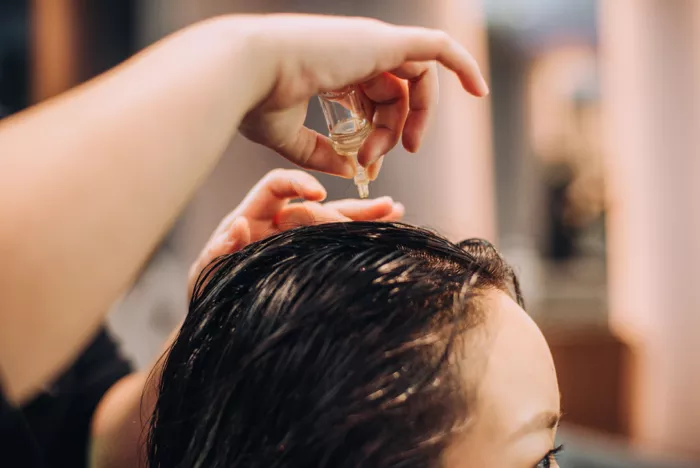Hair transplants have become a popular solution for individuals experiencing hair loss or thinning. Post-operative care is crucial to ensure the success and longevity of the transplant. One of the essential aspects of this care is moisturizing the scalp. Proper hydration can aid in healing, reduce discomfort, and promote the growth of transplanted hair. This comprehensive guide will provide detailed insights into how to effectively moisturize your scalp after a hair transplant.
Why is Scalp Moisturization Important After Hair Transplant?
Post-transplant scalp care is vital for several reasons. The scalp undergoes significant trauma during the procedure, leading to dryness, itching, and potential scabbing. Moisturizing the scalp helps in:
Promoting Healing: Hydrated skin heals faster, reducing the risk of infection and complications.
Reducing Itching and Discomfort: Dryness can cause itching, which might lead to scratching and potential damage to the grafts.
Preventing Scabs and Crusts: Moisture helps in softening and removing scabs, ensuring a cleaner healing environment.
Enhancing Hair Growth: A well-moisturized scalp provides a conducive environment for new hair follicles to thrive.
Understanding the Healing Process
Before delving into the moisturizing techniques, it’s essential to understand the healing process following a hair transplant. Typically, the recovery can be divided into three phases:
Initial Recovery (0-10 days): During this phase, the transplanted grafts begin to settle in the scalp. Redness, swelling, and scabbing are common. The primary focus should be on gentle care to avoid dislodging the grafts.
Intermediate Phase (10 days to 3 months): Scabs fall off, and the new hair starts to grow. The scalp may still feel tight and itchy, necessitating continued moisturizing.
Maturation Phase (3 months onwards): Hair growth becomes more noticeable, and the scalp’s sensitivity decreases. Consistent moisturizing helps maintain scalp health and supports robust hair growth.
Choosing the Right Moisturizers
Selecting the appropriate moisturizer is crucial for effective scalp care. Consider the following factors:
Ingredients: Opt for products with natural, gentle ingredients. Avoid those with alcohol, parabens, sulfates, and fragrances that can irritate the scalp.
Consistency: Light, non-greasy formulations are ideal as they do not clog pores or weigh down the hair.
pH Balance: The scalp’s natural pH is around 5.5. Choose products that maintain this balance to avoid disrupting the scalp’s protective barrier.
Hypoallergenic: For sensitive scalps, hypoallergenic products minimize the risk of allergic reactions.
Top Recommended Moisturizers for Post-Transplant Scalp Care
Here are some dermatologist-recommended moisturizers that are safe and effective for post-transplant care:
1. Aloe Vera Gel: Known for its soothing and hydrating properties, aloe vera gel helps calm the scalp and reduce inflammation.
2. Coconut Oil: Rich in fatty acids, coconut oil moisturizes deeply and has antimicrobial properties that prevent infections.
3. Jojoba Oil: Resembling the scalp’s natural sebum, jojoba oil is excellent for hydration without clogging pores.
4. Shea Butter: Packed with vitamins and fatty acids, shea butter nourishes and moisturizes the scalp effectively.
5. Fragrance-Free Moisturizers: Products like Cetaphil or CeraVe lotions, which are gentle and hydrating, are also suitable for sensitive scalps.
Step-by-Step Guide to Moisturizing Your Scalp
Here’s a detailed regimen to keep your scalp hydrated post-hair transplant:
1. Initial Days (0-10 Days)
Cleansing: Use a mild, sulfate-free shampoo as recommended by your surgeon. Gently wash your scalp without rubbing or massaging the grafts.
Application of Moisturizer:
- Frequency: Apply a moisturizer twice a day, or as advised by your doctor.
- Technique: Use clean hands to dab the moisturizer gently on the scalp. Avoid vigorous rubbing. Aloe vera gel can be applied directly to soothe the scalp.
Avoid Direct Sunlight: Protect your scalp from direct sun exposure, which can exacerbate dryness and irritation.
2. Intermediate Phase (10 Days to 3 Months)
Cleansing: Continue using a mild shampoo. As the scalp heals, you can increase the frequency of washing based on comfort.
Moisturizing Routine:
- Frequency: Maintain twice-daily moisturizing. You can start incorporating oils like coconut or jojoba oil.
- Technique: Warm the oil slightly and apply it with fingertips, massaging gently in circular motions to improve blood circulation.
Scab Management: If scabs form, do not pick at them. Instead, keep the area moisturized to soften and facilitate natural shedding.
See Also: How Often Should I Wash My Hair with Rice Water?
3. Maturation Phase (3 Months Onwards)
Cleansing: You can resume your regular shampooing routine with gentle products.
Moisturizing Routine:
- Frequency: Once daily moisturizing is typically sufficient.
- Advanced Care: Consider using a hydrating serum or a scalp mask once a week for additional nourishment.
Diet and Hydration: Maintain a balanced diet rich in vitamins and minerals that support hair health, such as vitamins A, C, E, and omega-3 fatty acids. Drink plenty of water to keep your body and scalp hydrated from within.
Additional Tips for Scalp Care Post-Hair Transplant
- Avoid Harsh Chemicals: Steer clear of hair products with harsh chemicals that can dry out the scalp.
- Gentle Handling: Be gentle when combing or styling your hair to avoid damaging the new grafts.
- Protective Measures: Wear a hat or use sunscreen on your scalp when outdoors to protect from UV damage.
- Regular Check-ups: Follow up with your surgeon or dermatologist regularly to monitor the healing process and address any concerns promptly.
Conclusion
Proper scalp moisturization after a hair transplant is a crucial aspect of post-operative care. By choosing the right products and following a consistent care regimen, you can ensure a smooth recovery and promote the health and growth of your new hair. Remember, patience and gentle care are key during this healing journey. Always consult with your healthcare provider for personalized advice and recommendations tailored to your specific needs. With diligent care, you can enjoy the full benefits of your hair transplant and achieve the desired results.


